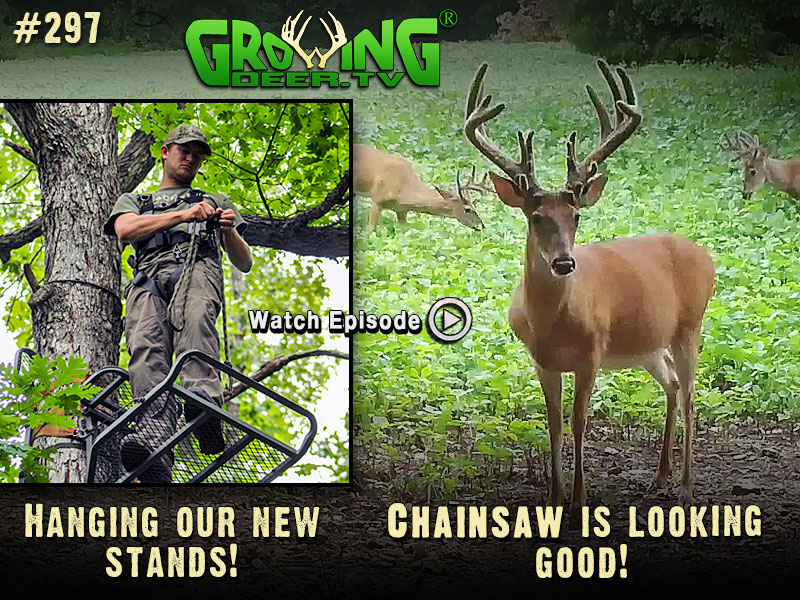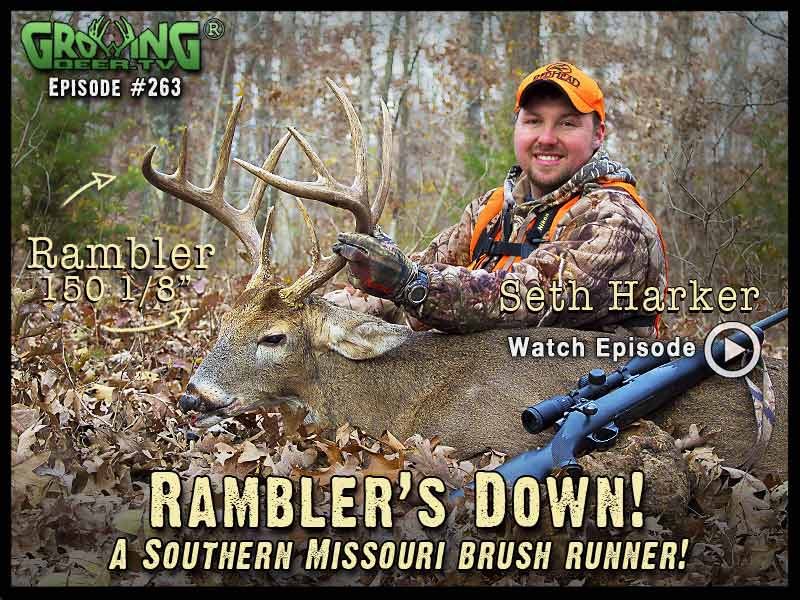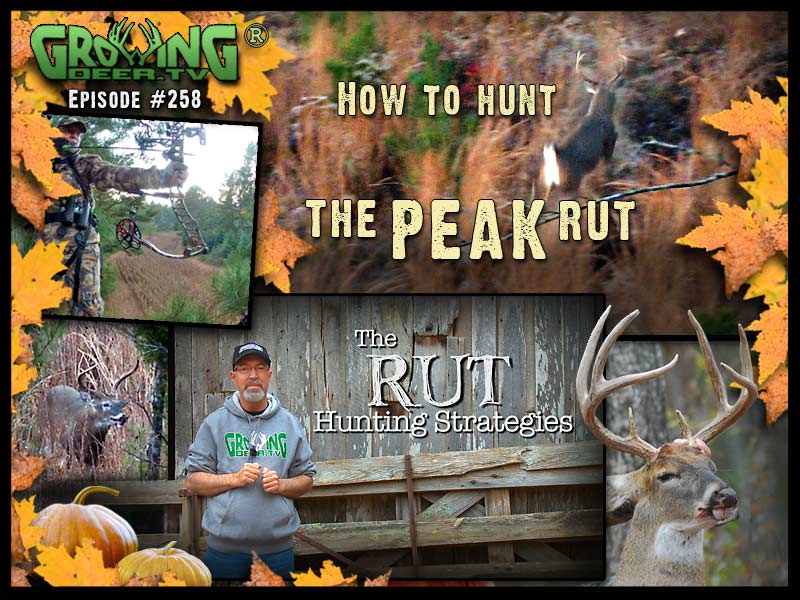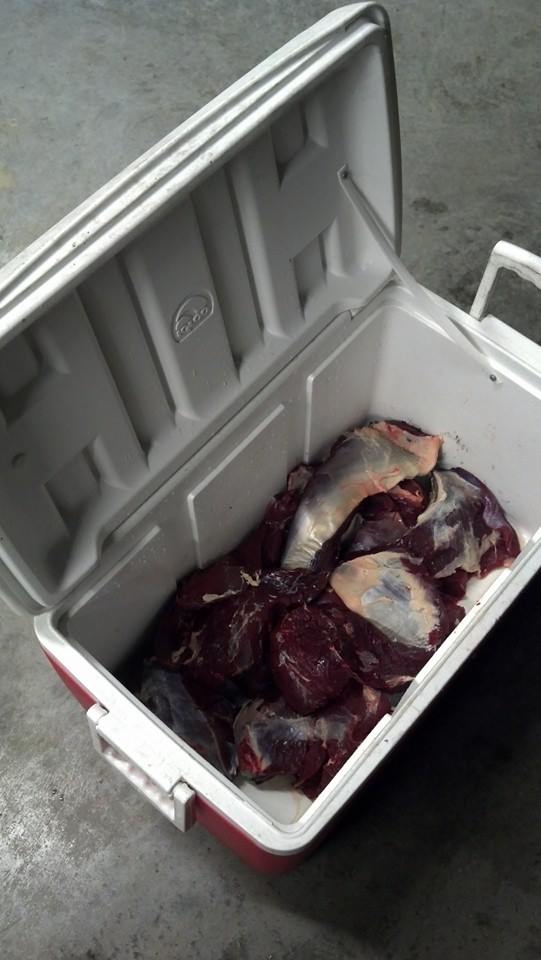Category: Hunting Tactics
4 Questions For A Realistic Hit List
As antler development is beginning to wind down, hit lists begin to develop. Hunters have had the opportunity to inventory the individual bucks based on antler characteristics. With individual bucks clearly recognizable, the next step is to develop a strategic plan to tag these bucks. Antler characteristics are just one of multiple aspects that make each buck an “individual”.
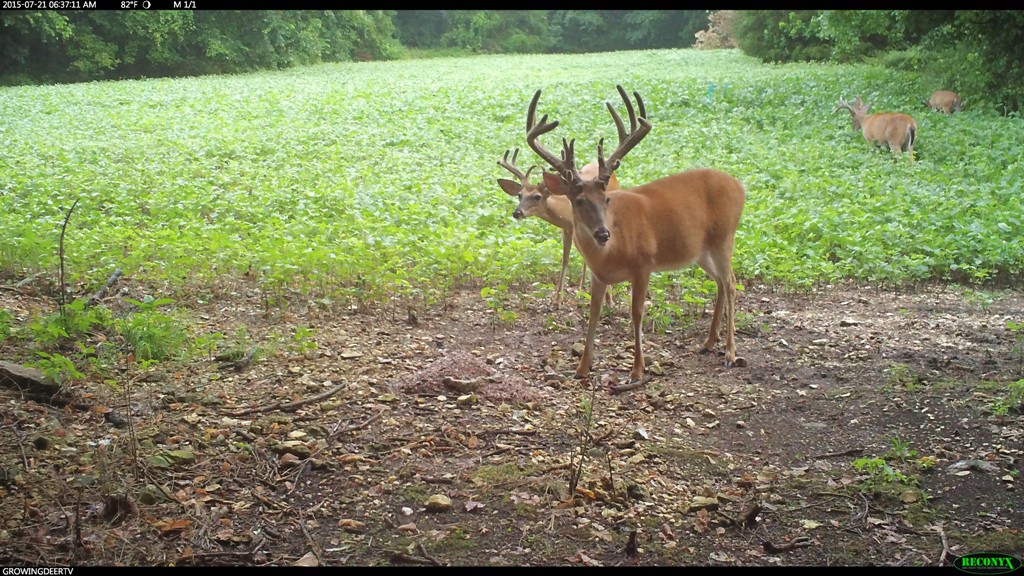
Our #1 hit list buck, Chainsaw, has been very active at this Trophy Rock site.
Each hit list buck exhibits certain characteristics that influence the chances of that deer being harvestable. Some of these characteristics can easily be examined in a series of trail camera photos you have received through the summer months. When examining these photos, ask yourself the following questions:
- When are the bucks being photographed, daylight or nighttime?
- Is the area the buck using accessible to me?
- Can I hunt the deer in transition or over a hidey hole food plot?
- Will the predominate wind allow me to reach my stand undetected?
Ask yourself these questions as opening day nears. Answers to these questions can help you narrow your hit list down further to strictly huntable deer and maximize your opportunities afield. Don’t simply let antlers dictate which stand you hunt, use your resources to determine which hit list buck provides you with the best chance to fill a tag! Be sure to share your success with us here at GrowingDeer.tv.
Enjoying Creation,
Matt Dye
Early Season Tactics – Episode #297
Watch to see some cool footage of a mature buck we call Chainsaw! Is it too early to plan how to hunt a certain buck? Not at The Proving Grounds. We’re using Reconyx cameras to learn Chainsaw’s pattern and hanging our new Summit treestands. This week we’ll share our early season strategy for hunting Chainsaw.
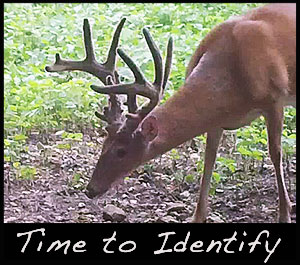 Tip of the Week:
Tip of the Week:
Bucks’ antlers are now developed enough to be individually recognizable. Start estimating age and patterning them now to get a head start for hunting season!
Advanced Hunting Techniques – Episode #289
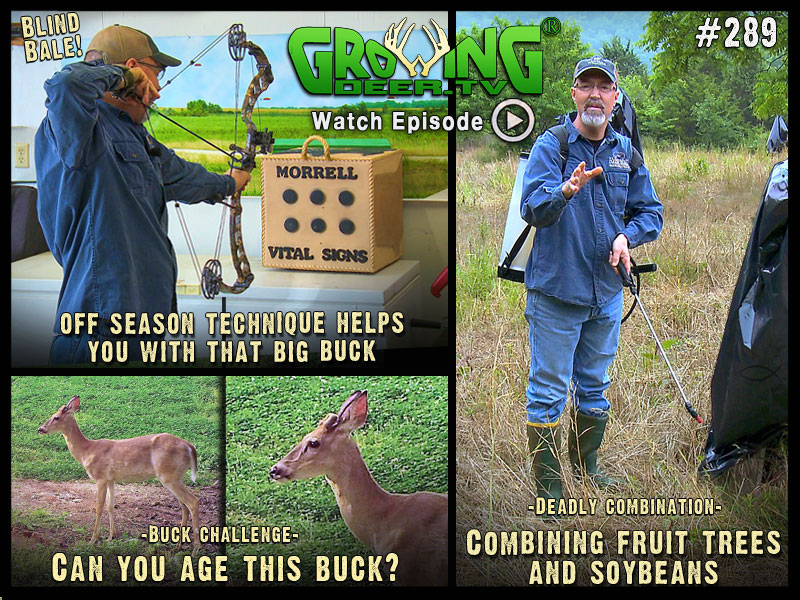 Deadly Combination: Fruit Trees & Soybeans
Deadly Combination: Fruit Trees & Soybeans
We started a tree plot last season. Now we’re planting a soybean plot among these young trees. It’s the early stages of a double trouble food plot for hunting. Twice the attraction will make a killer hunting location. We have tips to get you started.
Ever shoot a bow with your eyes closed? You might wanna try it. Grant shows you how to shoot blind bale style to get your trigger release on automatic when that buck comes in range.
Now is a great time to start aging deer on your property. Our Reconyx cameras are working full time. This week Grant invites you to age a deer. It’s a buck challenge for you!
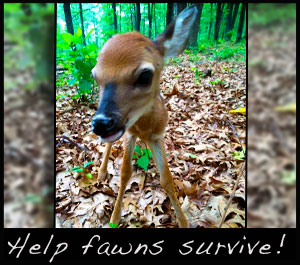 Tip of the Week:
Tip of the Week:
Fawns are fun to see. You might not see mom, but she’s close. Increase the fawns chances of survival by leaving it and the area undisturbed!
Scouting Early For Next Deer Season
Deer season recently closed in Missouri. Though we’re sad another season has past, part of our remedy is to begin scouting for next year. We no longer have to worry about pushing deer out of bedding areas or risk changing their patterns. Using this to our advantage, we are able to gather new information for next year.
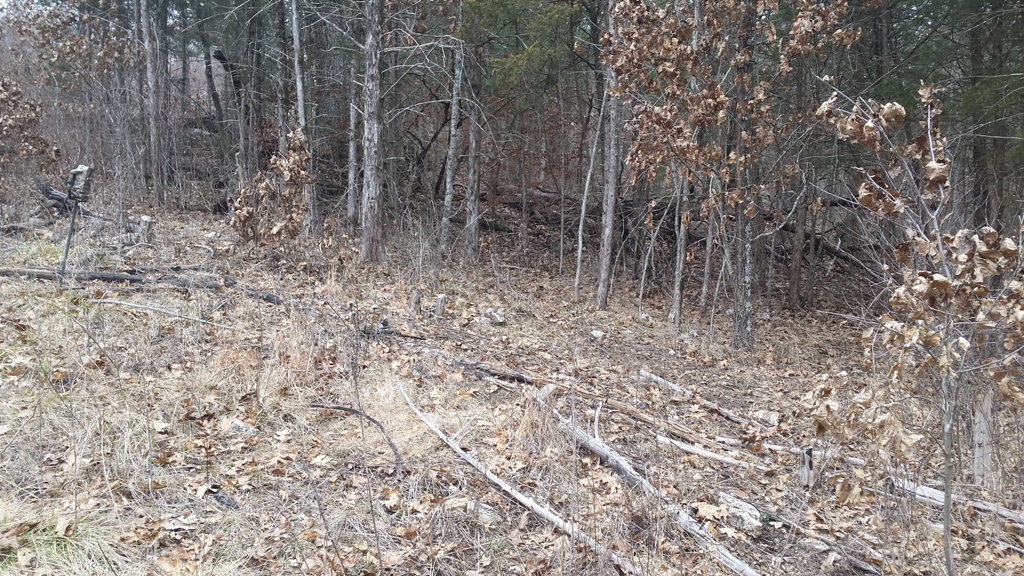
A Reconyx camera is watching a newly found trail and scrape.
When we scout, two things we look for are trails and scrapes. Trails can lead you to food, cover, and travel corridors that you may have not known existed. When looking for scrapes, look for those that show a lot of activity and are being used year after year. It may take a year or two of observation, but once you have found a great scrape, that can be an awesome hunting location. If you find a scrape make sure you watch episode 257 and 267 so you know how to properly hunt it.
Adam and I recently scouted The Proving Grounds, searching for well-used trails and scrapes. It wasn’t long before we found a trail that had a lot of sign. After a few hundred yards, it went through a mature white oak stand, an exciting food source when acorns begin to fall. Later that day we found another trail that had a great scrape. Immediately we placed a Reconyx camera on the scrape to see who was coming through. In just a few days we have gathered information that is already influencing our hunting decisions for next year.
This is a good time of the year to learn how deer are using your property. Whether you are outside shed hunting or chasing turkeys this spring, I hope you take the opportunity to begin scouting for next fall. You won’t regret it.
Managing whitetails with you,
Daniel Mallette
Patterning A Mature Buck – Episode #263
“It’s Rambler!” Watch Seth Harker’s amazement as he sees a 150” buck called Rambler coming toward him! Seth’s chased Rambler a long time, but Rambler’s been almost impossible to pattern. A few tweaks this season put the odds in Seth’s favor when a group of does use the nearby food plot and acorn patch. Plus – the hunter becomes hunted: Watch Grant get a jump on predator season when he takes a big ol’ coyote, using a 150-grain .308 Deer Season XP. Devastation!
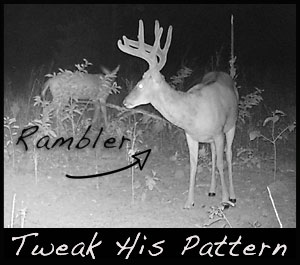 Tip of the Week:
Tip of the Week:
Do you have a big buck that’s hard to pattern? Try adding a small food plot in his range to make him more patternable.
Creating A Great Late Season Deer Hunt
It’s that time of the year again. The peak of the rut has passed in most parts of the country and as winter knocks at our door, the acorns have been picked through making the deer work harder searching for food. This is when winter food sources become hunting hot spots. Last week Adam shared that our hunting tactic for tagging a hit list buck is to pattern doe fawns, especially those feeding in food plots. Knowing this pattern would occur, we began making a plan this summer for late season hunting.
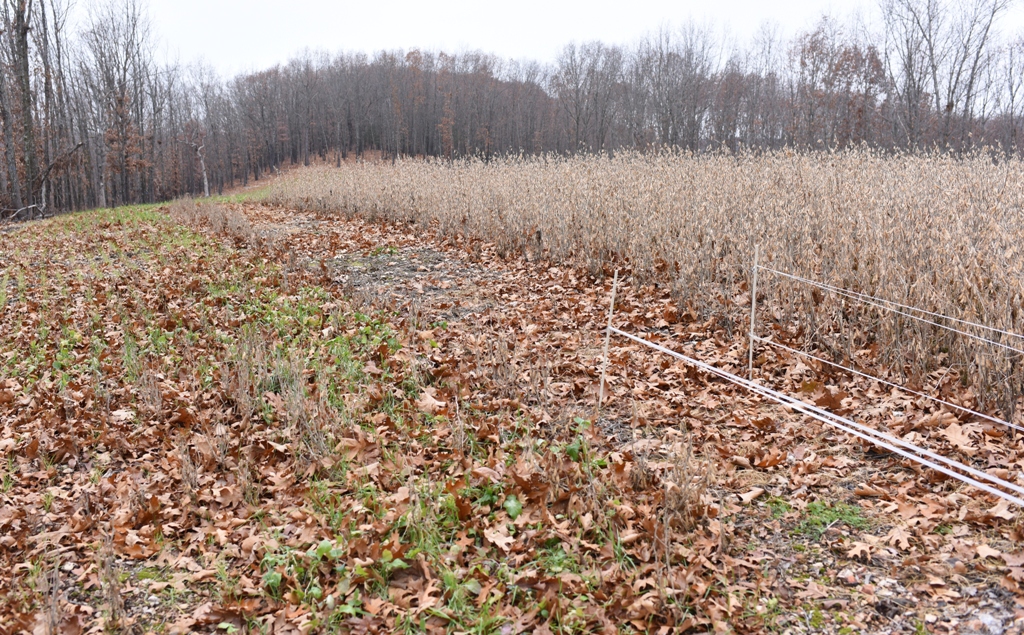
A small plot of standing soybeans opened for hungry deer.
Soon after planting, the GrowingDeer Team placed Hot Zone electric fences around several different portions of soybean plots at The Proving Grounds. The unfenced areas have experienced heavy browse, but the beans inside the fence have remained relatively untouched. This has saved a high quality food source to help the local herd through the winter months. In doing this, we have also created a great late season hunting setup.
We have recently opened small portions of the fencing at these plots, creating funnels. Like most animals deer tend to take the path of least resistance, especially when it comes to getting to the dinner table (this probably applies to us humans as well!). It won’t be long before deer figure out the subtle change and begin to pour into the standing beans. This is exciting for us because these larger fields, that were hard to hunt earlier in the year, now have smaller area for feeding which brings deer within range of our stands.
As we continue to use our Reconyx cameras, we will be watching for patterns of doe fawns that are taking advantage of the now easily accessible food, with the expectations that a mature buck could be right behind her. We look forward to the next few weeks. I hope you find the chance to get into the woods this time of the year and experience a great late season hunt.
Managing whitetails with you,
Daniel Mallette
Shifting Deer Hunting Strategies With The Rut
Over the past few weeks scrapes have played an important role in the GrowingDeer.tv Team‘s hunting arsenal. In a recent episode, GDTV #257, we discussed what scrapes are and how to use them for hunting the pre-rut. Even though bucks will continue to use scrapes throughout the season it will be less frequent and with no distinguishable pattern. As the first does enter estrus, bucks begin to focus on does. Scrapes are no longer the primary focus of our hunting.
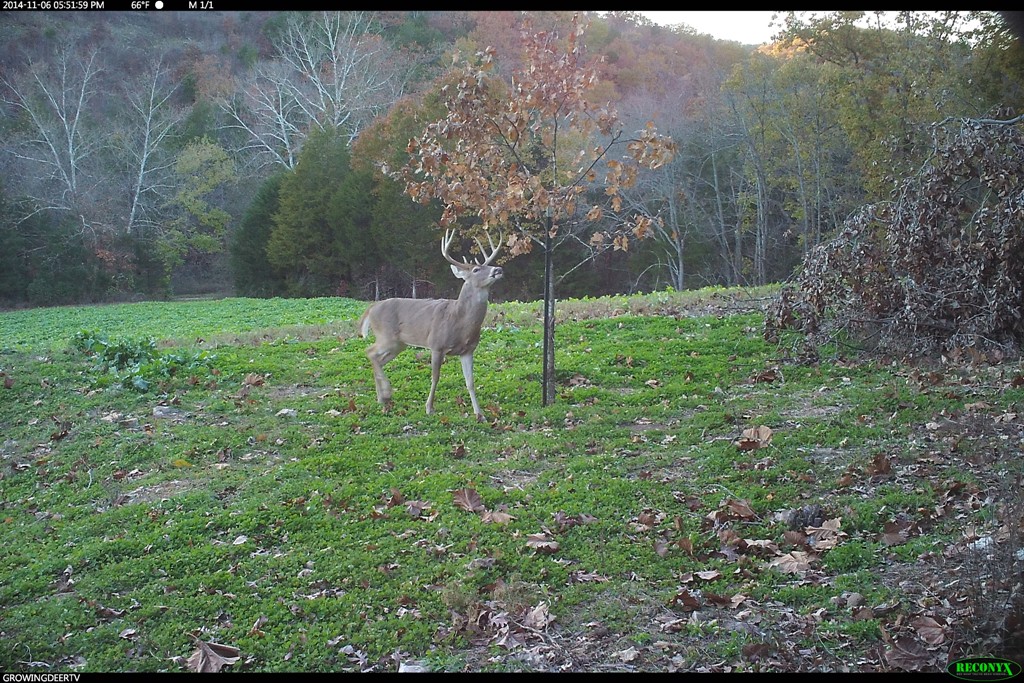
This mock scrape is at the end of a travel corridor. Bucks still check it out but it’s not as active as it was before a high percentage of the mature does in the area became receptive.
Maybe you have already observed does being chased by several small bucks followed by a larger buck. When this occurs, does get tired of constantly being pushed around and will seek out shelter. Time to shift focus and hunt stands that are near or overlooking areas of dense cover, like a thicket or a clear cut overgrown with saplings. The goal is to catch a buck searching for a doe that has or will take refuge in the cover. You can see how Grant put this strategy to use in episode #157.
In addition to hunting cover, our other preference this time of the year is travel corridors. Travel corridors are areas that deer prefer to use as they travel to their destination. These corridors tend to be paths of least resistance for deer and usually allow deer to move in relation to the wind. We know that does will be using these areas and that bucks will follow.
We also know that now is the prime time. As every day passes more does will become receptive. This means bucks will not have to look as hard for a date, and buck movement will decrease. When that happens, it will be time to shift hunting strategies once again!
I hope you get the opportunity to experience this exciting time of the season.
Managing whitetails with you,
Daniel Mallette
Rut Hunting Strategies – Episode #258
The peak rut is here! Grant shares real world strategies for hunting the peak rut. Plus, he’ll share post rut strategies. This episode begins with a surprise guest under our Muddy tree stands. He has no idea we’re right above him!
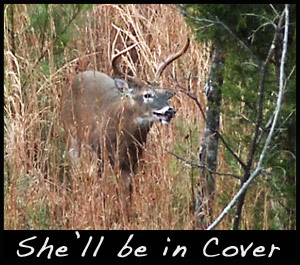 Tip of the Week:
Tip of the Week:
Hunting Bucks During The Peak Rut
Receptive does are the biggest attraction, not food, cover, water.
For best odds of seeing a big buck, hunt cover.
The Biggest Buck We Have Never Hunted
Understanding a buck’s characteristics will be the deciding factor in your success or failure this fall. When the calendar changes from September to October and bucks start to shift into pre-rut phase you never know who will step in front of your camera. When that buck does make his appearance, it’s important for you to know how to plan your strategy.
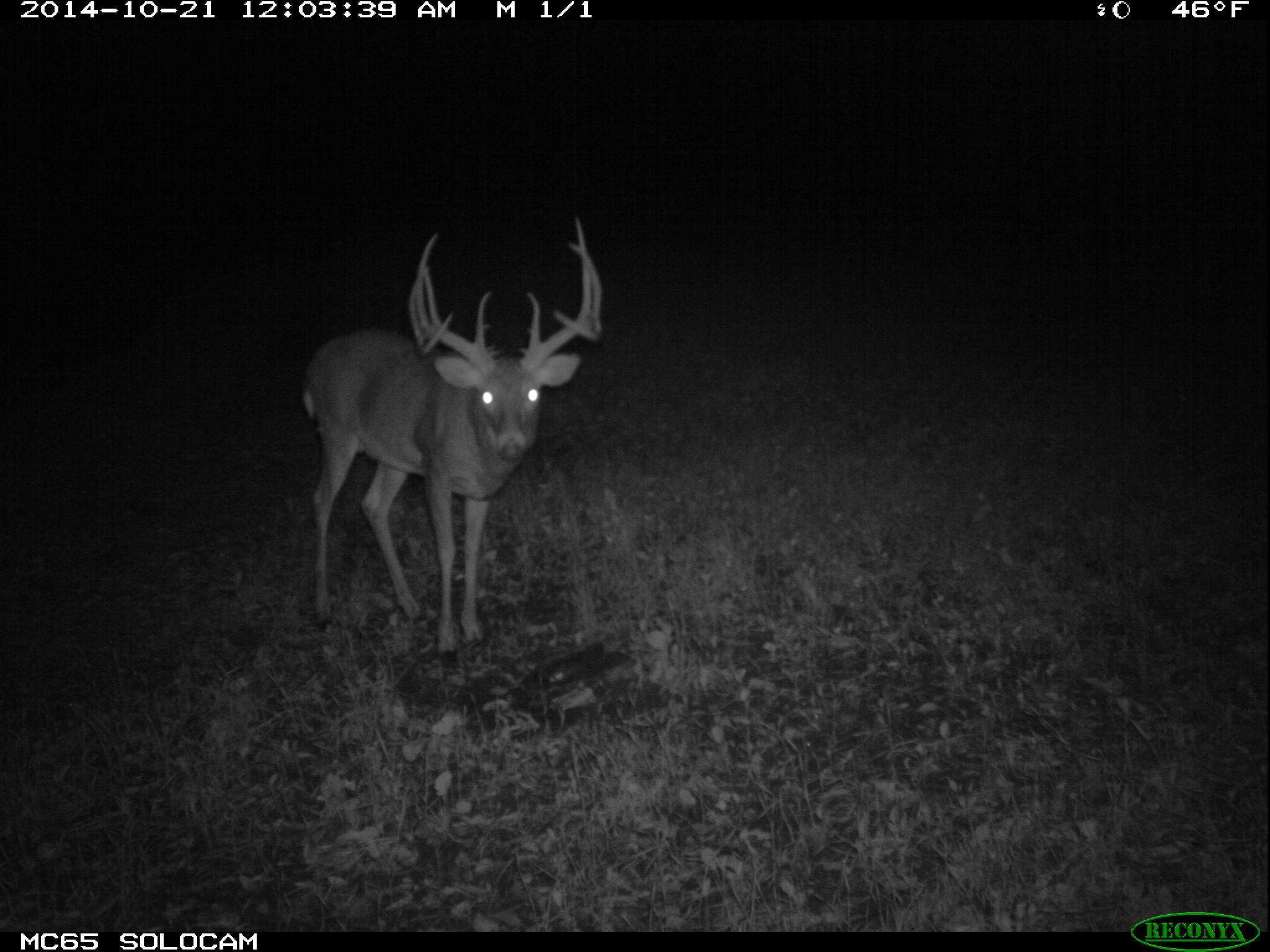
Royal George making his usual stop just after midnight. If his pattern doesn’t change it will be tough to harvest this buck.
Bucks that would gross score over 160” are extremely rare for us here in the Ozark Mountains of southern Missouri. So when a buck we call “Royal George” walked in front of our Reconyx camera last summer, we quickly put him at the top of our minds, but since he was only three we wanted to give him another year. George is an incredible buck, and once we got to know him, we found out one of his characteristics that helped him get so big. Looking through all the images we have of him, it’s safe to say that 95% of them are at night. The remaining 5% of pictures were taken during June when bucks are seen more regularly during daylight. Now that George has reached 4.5 years old he’s on the hit list, but there is a difference between being on the hit list and being hunted. Here is where a lot of hunters will make mistakes. Listen up! Just because a hit list buck is showing up at one of your cameras, that doesn’t mean you should be hunting him with regularity. Why should you waste time and put pressure on a buck that probably won’t step out while you’re hunting anyway? You shouldn’t. This brings us back to George who is very nocturnal. When I say very, I’m saying that every picture taken this year of George has been before or after legal shooting hours. Yes, George is living on The Proving Grounds, but he has shown no signs of moving during daylight. What does this mean? We’re not focusing our time hunting a buck that we have a very small chance of even seeing, let alone harvesting. The best approach we can have with bucks like George is to stay out. Let him experience life with little to no pressure, and hope that when the time comes for him to be searching for a receptive doe he’ll choose her over darkness. When that day comes we’ll be ready to capitalize on his decision to choose does over darkness.
One of the biggest mistakes a hunter can make is getting anxious and spending hours hunting a buck that isn’t moving during daylight. This mistake can push a buck even farther into cover and darkness. By limiting the amount of pressure on your deer herd during early season, you can reap the rewards of daylight activity when the temperatures are cool and the hit list bucks are on their feet.
Daydreaming of Whitetails,
Adam
Hunting Strategies: Adjusting Your Game Plan
It’s been a great bow season so far! The GrowingDeer Team has been blessed enough to have harvested several deer already. The weather so far has been fair to poor to say the least. Now is the time to study the available food sources and our game plan. We need to decide if we will continue with our current strategy or adjust for changing food sources.
Most of our hunting so far has been on the edge of green food plots. Over the last week we’ve seen and heard many acorns falling on the ground. After a successful hunt last night, Grant studied the inside of a large does’ stomach to find it packed with acorns. Lesson learned – it’s time to start hunting acorns! If we continue with the approach of hunting food plots, we will soon be frustrated with little deer activity. If we start adjusting our hunting strategies and find the right oak tree we could be in for a very fun hunt!
Recently we were out on the property scouting and we found what looks like a very active oak tree. This specific tree, a Chinkapin oak, is in the white oak family and produces an acorn a little smaller than your typical white oak, but this nut is still a favorite to the deer. Once we took a few more minutes to look under the tree we knew deer were feeding on the fallen acorns. After studying the area we decided our best option was to use a Redneck Bale blind tucked away in the brush about 25 yards from the tree. We are excited to get back in the area and climb into the bale blind for the first hunt!
Get outside and scout those food sources! You may need to change your strategy to make sure you’re not missing out on any dynamite hunting locations.
Daydreaming of whitetails,
Adam



